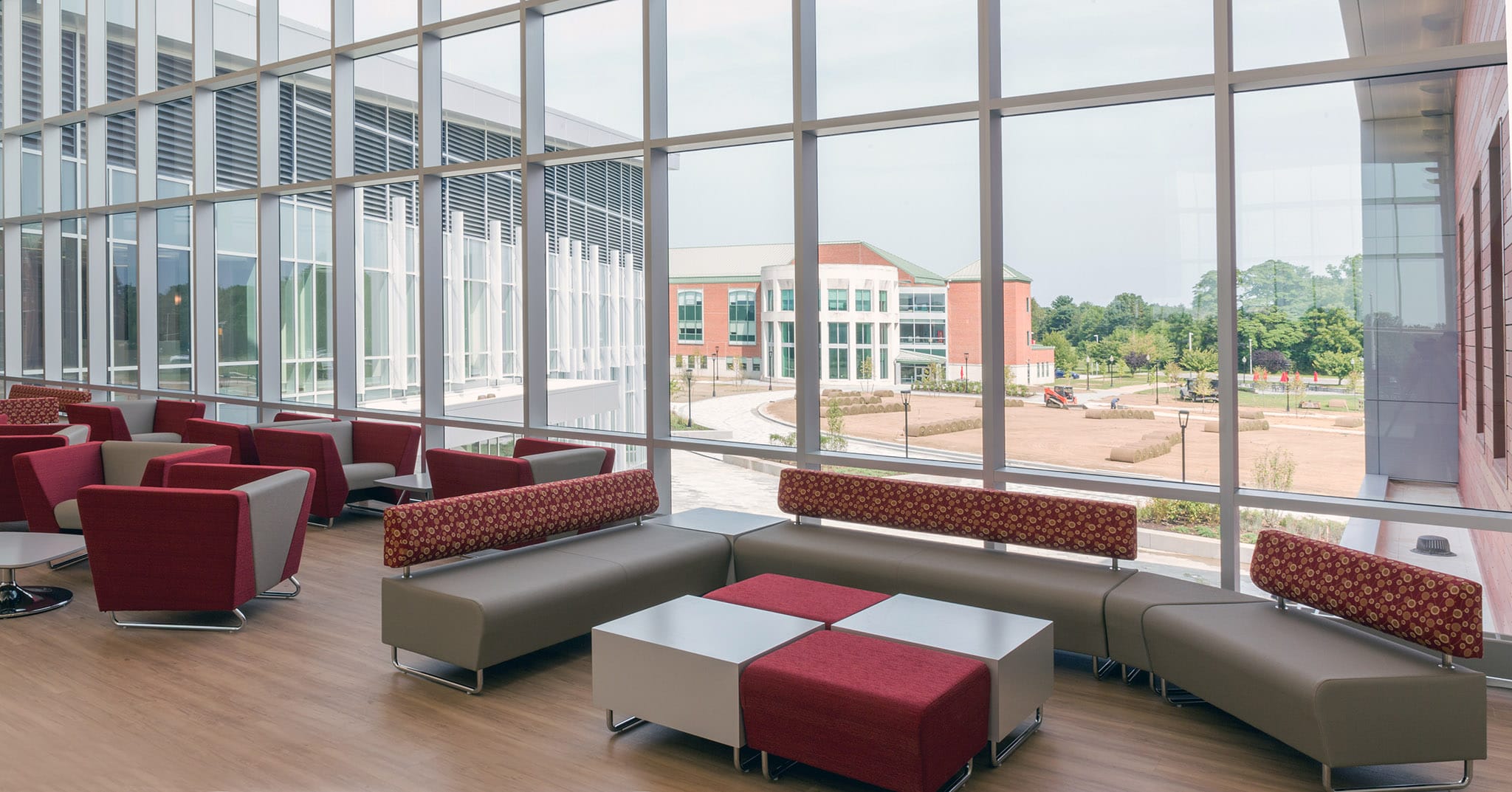Why Corporate Offices Should Take Cues From College Campuses
![]()
Study shows how college campus design influences how we work.
By Michael Woodward Ph.D.
Since the earliest days of the American University system, business leaders and hiring managers have fiercely competed to recruit graduates into their employee ranks. The fact is, colleges and universities in this country have long been the greatest feeder of professionals to American businesses. Despite this, little research has been done on the impact college campus design has on how students function and the influence that their experience on campus has in their transition to the working world. Let's face it, the traditional college campus and the modern metropolitan cube farm are worlds apart.  To learn more about this unique disconnect workplace design experts Jonathan Webb, vice president of Workplace Strategy at KI, and Brett Shwery, senior vice president of Corporate Workplace Design and Delivery for AECOM, decided to research the topic. I had the opportunity to speak with the two authors about their recent research on what can be learned from college campus design when it comes to modern offices. Our focus was on their recent white paper titled "Collegiate Design: The New Driver for Workplace Design."
To learn more about this unique disconnect workplace design experts Jonathan Webb, vice president of Workplace Strategy at KI, and Brett Shwery, senior vice president of Corporate Workplace Design and Delivery for AECOM, decided to research the topic. I had the opportunity to speak with the two authors about their recent research on what can be learned from college campus design when it comes to modern offices. Our focus was on their recent white paper titled "Collegiate Design: The New Driver for Workplace Design."
Both Webb and Shwery encourage business leaders and their hiring managers to “look at who you are recruiting and where you are recruiting from.” They note that if you are heavily recruiting right out of college it only makes sense to take a look at the design of those campuses. Most of the recruits coming out of college have spent four years being trained and acculturated to these unique environments, so it's essentially all they know.
As part of their research, they toured both college campuses and corporate offices across the country. During their visits to college campuses, they focused less on furniture, carpet, and color than on the actual spaces themselves. What they found is that the spirit of college student work at a high level is not all that dissimilar to how we work in the business world, particularly when it comes to project-based environments. The big difference is that in college students aren't assigned a small parcel of square footage on a cube farm and then directed to camp out there for eight to 10 hours a day. Their experience is far different. Below are some of the key findings from their study that may help inform how we rethink office design.
Establish a Core
Although work is becoming more and more remote it's important to have a central place where employees will naturally intersect with each other, thus offering the opportunity for organic conversations to occur. One of the key observations of the study was the fact that lobbies, circulation spaces and corridors function as more than just conveyances between spaces, which is typically not the case in most office designs.
Both Webb and Shwery point out that, “at college, 1st spaces are corporate's 3rd spaces, and vice versa. Put another way, corporations are focused on designing 3rd spaces for their employees to use as an escape from their personal workstations. In college, however, 3rd spaces ARE personal workstations.”
A quick walk around any college campus will show you that students are studying and socializing everywhere and they are very comfortable with it. Office planners should take note.
Activate your Outdoors
A great deal of research has found that spending time in nature and having access to natural light can have a positive impact on stress and productivity. In their study, the authors note that “exterior spaces are truly part of a college campus' overall planning strategy,” yet most businesses fail to capitalize on their access to outdoor space. Even if your access is limited it pays to think creatively about ways to provide access to fresh air and nature.
Think Holistically
Both Webb and Shwery point out that while in college most students have the opportunity to choose how, when, and where they get their work done. And, they typically choose the people they get to work with on their assignments. When you really look at the college experience there really isn't a lot of structure or management. The fact is professors generally set goals, give assignments and provide guidance through classes and office hours. The typical employee experience is somewhat different, particularly when it comes to how and where work gets done.
The authors recommend a non-prescriptive workflow to allow employees the freedom of movement and the selection of the kind of space that is most suited to their needs. Just as the college campus provides flexibility in the kinds of workspaces students can choose, so to should the modern workplace offer this kind of flexibility. Webb and Shwery agree that companies need to be more outcome focused and less prescriptive of the "how" of work. Autonomy and freedom of choice can be surprisingly motivating!
In closing, Webb noted, “if the physical environment doesn't allow a newly hired graduate to come into their place of work and quickly adapt the work style they are accustomed to the student will become lost.”